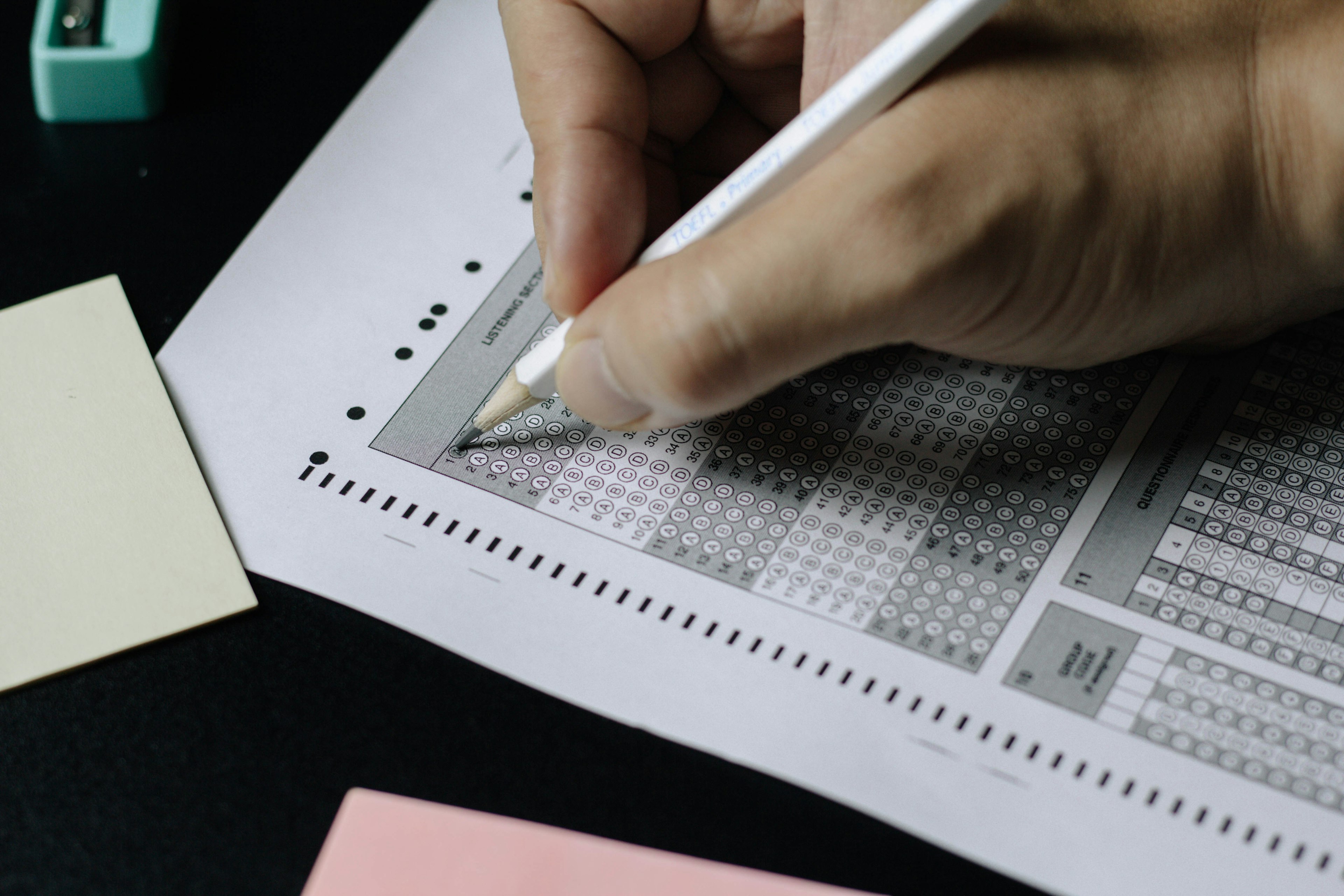
Nothing quite beats the feeling of earning that ADI green badge. Months (maybe even years!) of hard work has paid off, you’ve passed all of the tests and it’s time to start making money doing what you love. Happy days!
While it probably feels like you’ve jumped through all of the hoops they could throw at you, the DVSA examiners aren’t quite done with you yet. At least once every 4 years, you’ll be required to undergo the ADI standards check. The motoring bigwigs just want to ensure that you’re staying on top of your teaching game and not slacking once you're comfortable in the job.
It makes sense, really, as being a driving instructor puts you in an important position of trust and responsibility. Think of the standards check like the car version of the Ofsted inspections teachers are subjected to. The good news is that yours only lasts about an hour—as opposed to a few days!
So, what can you expect from the standards check? Let’s dive into the nitty gritty...
What is a Standards Check?

The standards check, which instructors take every 2-4 years, is actually very similar to part 3 of the ADI test. It involves a DVSA examiner sitting in on one of your lessons in order to judge your teaching ability. You'll be tested on three main areas:
✓ Lesson planning
✓ Risk assessment
✓ Teaching and learning skills
When it's time for you to complete a standards check, you'll receive a letter from the DVSA letting you know that it's due. The test is free of charge and you can book it online. Just remember to leave yourself enough time to find a suitable pupil and prepare a solid lesson.

Even ADIs who are not currently teaching or do not own a car are required to complete the standards check every 4 years. Those who do not comply will be removed from the ADI register.
Things to take on the day
The best way to set yourself up for success is to be fully prepared for what's to come. If you're reading this, well done—you're already off to a great start!
The 3 main things you need to have ready for the standards check are paperwork, a pupil and a car. We all know that the DVSA aren't the most laid-back folk when it comes to tests of any kind (for good reason), so make sure you're fully aware of the guidelines surrounding each one.
Paperwork
This part's fairly straightforward. In order to book your standards check you'll need to be able to produce your driving licence number and your ADI personal reference number. It's also useful to have this information to hand on the day, just in case.
When it comes to the standards check itself, the examiner will need to see your ADI registration certificate before you can set off. It's in your best interest to produce this as early as possible. That way you can maximise the amount of time you have for the actual lesson. Waiting around for forms to be filled in might not be that fun for your (possibly already nervous) pupil!
A pupil
This is a decision you should really give some thought, as it could have a big impact on how the check goes. The person in question can be a learner or a fully qualified driver. It cannot be another ADI or anyone preparing to take part 3 of the ADI test.
Now, you may initially think that it makes more sense to select someone who already holds a licence, as they should be confident behind the wheel and therefore a breeze to work with. Keep in mind, however, that experienced drivers can be very set in their ways and may have picked up a few bad habits that they are not that willing to shake. It might be hard for you to show off your teaching abilities under these circumstances.
On the other hand, if you're currently working as an ADI, you should have access to quite a few learners. Sure, they might find the prospect of joining you on a standards check a bit daunting, but at least you know their learning style and (hopefully) how to cater to their requirements.
A car
Rocking up to any kind of formal test in a fancy sports car will not impress a DVSA examiner. In fact, if it's a soft-top convertible and/or lacks full-size rear seats, they will simply cancel your standards check on the spot. Not ideal.
Cars used for the standards check must meet the following requirements:
✓ Be roadworthy and safe
✓ Come with a valid MOT certificate or be less than 3 years old
✓ Be fitted with working seat belts (in the front and rear)
✓ Display L-plates if your student is a learner (D-plates if you're in Wales)
Again, if you show up in a vehicle that is deemed unsuitable, the check will be cancelled.
What the examiner is looking for
When you head into your standards check you should be aiming to perform a regular driving lesson with just a little bit more 'oomph'. This means making it clear what you intend to do, how and why you are doing it, and evaluating the performance as you go. Not all of this has to be explained verbally—no need to go over the top. Just make sure the reasoning behind your actions is apparent to the examiner.
Time management

The standards check is a great opportunity to show off your time-keeping skills. After all, a big part of being a successful ADI is understanding the needs of your pupils and dividing your lesson availability accordingly. The standards check itself should last around an hour, followed by a 10-15 minute debrief from the examiner. Remember: chances are, you're not the only person the examiner is observing that day, so no one will be happy if the appointment overruns.
As is the case in normal lessons, you should split your hour into 3 parts: an introduction, the drive itself and a reflection on how the pupil did. The first and latter should take around 5 minutes, leaving you to spend 45-50 minutes on the actual drive.
The 'pre-brief'
It is really important that you start things off by thoroughly explaining to the pupil the goals of the lesson and how you aim to meet them. Work on the details together. Discuss which areas they would like to improve on and decide how best to do that.
Make sure the pupil is aware that they have control over the car and should take this responsibility seriously. Of course, you share some of the responsibility and should make use of your dual controls if necessary. This is just a reminder for your pupil, rather than something that should make them feel under pressure. Emphasise the fact that the examiner is there to watch you, not them. The only difference they should notice is the examiner's head when they check the central mirror and a change in the weight distribution of the car.
All that's left is some final safety checks and you should be good to go!
Teaching ability
Throughout the lesson, the examiner is looking to see how well you structure and carry out lessons. This includes focusing on the specific needs of the pupil and responding to any mistakes or hazards in a timely and helpful manner.
Strive to make your lesson both effective and enjoyable. After all, people tend to relax and learn more quickly if driving is a positive experience. Keep up a good dialogue with the pupil to build a healthy rapport. Ask plenty of questions about why they are making certain choices and see if they can point out potential risks on the road. All of this should show the examiner that you are keeping track of progress and helping the pupil to recognise the skills they are developing.
Make sure that you are playing to the pupil's strengths. It might be possible to employ certain psychological techniques or games that help them get to grips with new skills or information. All of this should contribute to the impression that you provide client-based lessons.
When it comes to the debrief at the end of the lesson, discuss with the pupil how they think they did, if they accomplished what they wanted, and possible areas to work on in future lessons. After that, your work here is done! Time for you to get your results.
What your mark means

The ADI standards check mark sheet is divided into 17 areas. You receive a mark between 0 and 3 for each area. Once they've all been totted up, you'll be graded either A, B or (gulp) F. Here's what they all mean:
✓ 0-30 → Grade F: your performance was unsatisfactory
✓ 31-42 → Grade B: your performance was satisfactory and you will remain on the ADI register
✓ 43-51 → Grade A: you have shown a high standard of instruction and will remain on the ADI register
Be aware that there are a couple of things you can do on the standards check that will result in an immediate fail. If the examiner has to stop the lesson at any point because you've put yourself or someone else in danger, it's game over. Similarly, if you get a score of 7 or less in the risk management category, a grade F is coming your way.
If things don't go to plan and you get an F, it's not quite the end of the road. The DVSA are nice enough to give you two more attempts at the standards check. Still no success after the other tries? It's not good news. You'll need to take the full ADI tests all over again. This is why it's really important that you take the standards check seriously!
When you'll take the test
The DVSA need you to take a test regularly to make sure you're still teaching to a good enough standard and to check if your ADI grade is still accurate.
You'll take a test at least once every 4 years, but you may be asked to take a test sooner if you meet three or more of the following triggers:
Average number of driving faults per test → 5 or higher
Average number of serious faults per test → 0.5 or greater
Percentage of driving tests where the driving examiner had to take physical action → 10% or higher
Driving test pass rate → 55% or lower
These triggers will only come into effect if you take 5 or more pupils to test in a 12-month period, so if you don't teach regularly, you don't need to worry about hitting your objectives. You will, however, still need to take at least one standards check test every 4 years.
When is your ADI Standards Check?
Well, there you have it! All the ins and outs of the ADI standards check. If you're currently working as an ADI, you should have no problem meeting the requirements. For those of you who aren't giving lessons at the moment, but want to remain on the register, it's definitely worth squeezing in some practice before you book your appointment. Get in touch with some fellow ADIs still in the biz and see if they can recommend a pupil or provide some last-minute advice.
Whether you're a PDI or you've got your green badge, ADI Network does all the marketing for you. You can accept new jobs, manage existing ones, and take advantage of exclusive perks and Continued Professional Development resources! What's more, it won't cost you a penny.
Subscribe for driving advice, offers & more
We'd love to let you know about our courses, news and offers via email. You may unsubscribe at any time.
Star Genie Limited trading as PassMeFast. Company number 10093359
Copyright © 2024 owned by Star Genie Limited
PassMeFast, Blue Tower, MediaCityUK, Salford, M50 2ST

